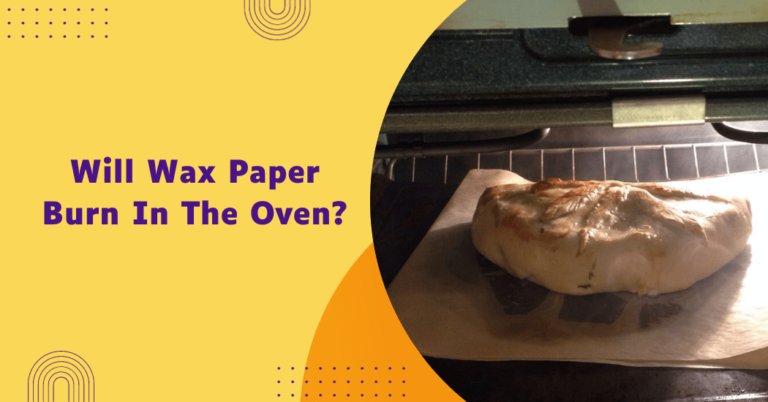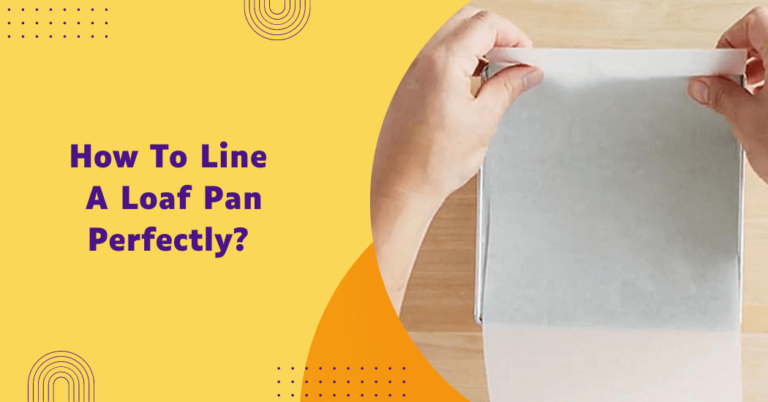Can you roast vegetables on wax paper?
Roasting vegetables is a common culinary practice that provides a delicious and healthy side dish to any meal. However, the material you use to line your baking tray can affect the outcome. This brings us to the question of whether you can roast vegetables on wax paper.
This inquiry delves into the practicality and safety of using wax paper as a cooking surface for vegetables. In this exploration, we will examine the characteristics of wax paper, its heat resistance and its potential impact on the roasting process.
Join us as we unravel the mystery behind using wax paper in vegetable roasting and uncover whether it’s a kitchen hack or a recipe for disaster.
Roast Vegetables on Wax Paper
Wax paper is a type of thin, semi-transparent paper that is coated with wax on both sides. It is commonly used in the kitchen for food packaging and as a baking liner to prevent the sticking of baked goods.
However, it’s not recommended to roast vegetables directly on wax paper. Wax paper has a lower heat resistance compared to parchment paper or aluminum foil and it can melt or catch fire at high temperatures.
If you want to roast vegetables, it’s better to use parchment paper or a baking sheet coated with a thin layer of oil to prevent sticking. This will ensure that your vegetables cook evenly without compromising the quality of the paper or the taste of your dish.
Reasons why you can’t use wax paper for roasting vegetables
While wax paper may seem like a convenient option for roasting vegetables, there are potential risks and safety concerns to keep in mind.
Here are some reasons why you can’t use wax paper for roasting:
- Heat Resistance: Wax paper has a lower heat resistance compared to parchment paper or aluminum foil. This means that it’s not suitable for use in high-temperature cooking methods, such as roasting or broiling.
- Melting and Stickiness: Wax paper is coated with a thin layer of wax, which can melt at high temperatures. This can cause the paper to become sticky and adhere to the food, making it challenging to separate the vegetables from the paper.
- Release of Harmful Chemicals: Wax paper is coated with paraffin wax or soybean-based wax, both of which have been linked to the release of toxic chemicals when exposed to heat. These chemicals can transfer onto your vegetables and potentially cause harm to your health.
- Uneven Cooking: Unlike parchment paper or aluminum foil, wax paper is not designed for high temperatures and can easily tear or melt in the oven. This can result in uneven cooking of your vegetables, leading to some pieces being overcooked while others are still undercooked.
- Limited Reusability: Unlike parchment paper, which can often be reused for multiple batches of roasted vegetables, wax paper tends to degrade more quickly. Reusing wax paper may increase the risk of it tearing or melting.
- Environmental Impact: Wax paper is not recyclable or biodegradable, which means it can contribute to environmental pollution if not disposed of properly. This is another factor to consider when deciding whether to use wax paper for roasting vegetables.
Factors to consider when roasting vegetables on wax paper
Roasting vegetables on wax paper is not recommended, as wax paper is not designed for high-temperature cooking.
If you must use wax paper, follow these precautions:
- Low Heat: If you choose to use wax paper, keep the oven temperature low (around 300-350°F or 150-175°C). This minimizes the risk of the wax melting or catching fire.
- Short Cooking Time: Limit the roasting time to avoid prolonged exposure to heat. Check the vegetables frequently to prevent overcooking.
- Use as a Liner: Place the wax paper as a liner on a baking sheet rather than directly on the oven rack. This provides an additional barrier and helps distribute heat more evenly.
- Ventilation: Ensure good ventilation in your kitchen by turning on the exhaust fan or opening windows. This can help dissipate any fumes that may be produced by the wax paper.
- Monitor Closely: Stay close to the oven and keep an eye on the vegetables throughout the cooking process. If you notice any signs of smoking or melting, immediately remove the vegetables from the oven.
- Alternative Options: Consider using parchment paper or a silicone baking mat, which are designed for higher temperatures and are a safer choice for roasting vegetables.
It’s important to note that while these precautions may reduce the risks associated with using wax paper for roasting vegetables, it is still not the best choice for high-heat cooking.
Using materials specifically designed for oven use, such as parchment paper or silicone mats, is the safest and most effective way to roast vegetables.
Alternative options for roasting vegetables
If you want to avoid the potential risks and considerations of using wax paper, there are several alternatives that you can use for roasting vegetables:
- Parchment Paper: This is the most recommended alternative to wax paper for roasting vegetables. It has a higher heat resistance and its non-stick surface ensures even cooking without any harmful chemicals.
- Aluminum Foil: Another popular choice for roasting vegetables is aluminum foil. It provides a similar non-stick surface as parchment paper and can withstand high temperatures without melting or burning.
- Silicone Baking Mat: A silicone baking mat is a reusable, non-stick option that is designed for oven use. It’s an eco-friendly alternative to wax paper and produces evenly cooked vegetables.
- Oil-coated Baking Sheet: If you don’t have any of the above options, you can use a baking sheet coated with a thin layer of oil to prevent sticking. This method is often used in professional kitchens and provides similar results to using parchment paper or silicone mats.
It’s essential to consider the potential risks and alternatives before deciding on a cooking method. By choosing materials designed for high-heat cooking and following safety precautions, you can ensure a delicious and safe result when roasting vegetables.
So next time you’re planning on roasting your favorite vegetables, opt for parchment paper or silicone mats instead of wax paper to achieve the best possible outcome!
Tips for roasting vegetables safely and effectively
- Choose the right temperature: Different vegetables require different cooking temperatures, so be sure to check the recommended roasting temperature for each type of vegetable. As a general rule, most vegetables should be roasted at a high temperature (around 400-425°F or 200-220°C) to achieve a crispy exterior and tender interior.
- Cut vegetables into similar sizes: To ensure even cooking, it’s best to cut your vegetables into similar-sized pieces. This will prevent some pieces from becoming overcooked while others are still undercooked.
- Use enough oil: Applying a light coating of oil to your vegetables will help them crisp up and prevent sticking.
- Leave space between vegetables: Give your vegetables some room on the baking sheet to allow for proper air circulation. Overcrowding can result in uneven cooking and soggy vegetables.
- Flip or stir halfway through: To ensure even cooking, flip or stir your vegetables halfway through the roasting time. This will help prevent burning and achieve a crispy texture.
- Experiment with seasonings: Don’t be afraid to get creative with seasonings and spices when roasting vegetables. Different combinations can add flavor and make your roasted veggies even more delicious.
Remember to always prioritize safety when cooking and opt for materials designed for high-heat cooking to avoid any potential risks. By following these tips and precautions, you can enjoy perfectly roasted vegetables every time!
FAQs | Roasting on Wax Paper
Can I use wax paper for roasting at lower temperatures?
Yes, you can use wax paper for roasting at lower temperatures (around 300-350°F or 150-175°C) but it is not recommended.
Prolonged exposure to heat can still cause the wax to melt or catch fire. It’s best to use materials specifically designed for oven use, such as parchment paper or silicone mats, to ensure safety and avoid any potential risks.
Is it OK to roast vegetables on parchment paper?
Yes, it is perfectly safe to roast vegetables on parchment paper. It is the most recommended alternative to wax paper for roasting vegetables.
Parchment paper has a high heat resistance and provides a non-stick surface, making it an ideal choice for oven use. So go ahead and use parchment paper with confidence for your next vegetable roasting session!
Can I roast vegetables without any liner?
Yes, you can roast vegetables without any liner. However, this may result in your vegetables sticking to the baking sheet and becoming difficult to remove.
It’s best to use a liner or coat your baking sheet with oil to prevent sticking and achieve an even cook. So while it is possible, we recommend using a liner for more successful results.
Final Words
While wax paper is not suitable for roasting vegetables due to its low heat resistance and potential for burning, various alternative methods and materials can be safely employed in the culinary world.
To ensure a safe and successful roasting experience, it is recommended to use parchment paper or aluminum foil, both of which are designed to withstand higher temperatures without compromising food safety.
By opting for the right materials, you can enjoy delicious roasted vegetables without the risk of unwanted mishaps in the kitchen.






